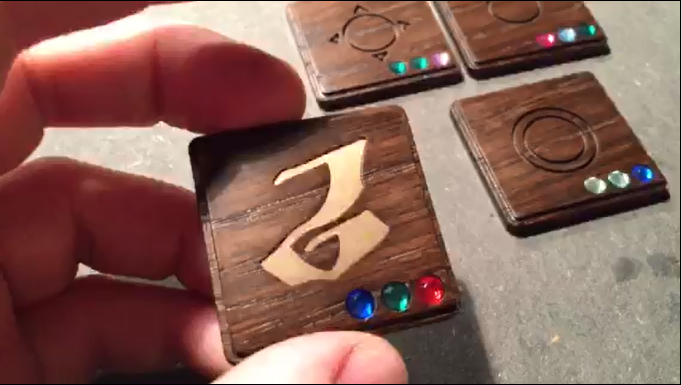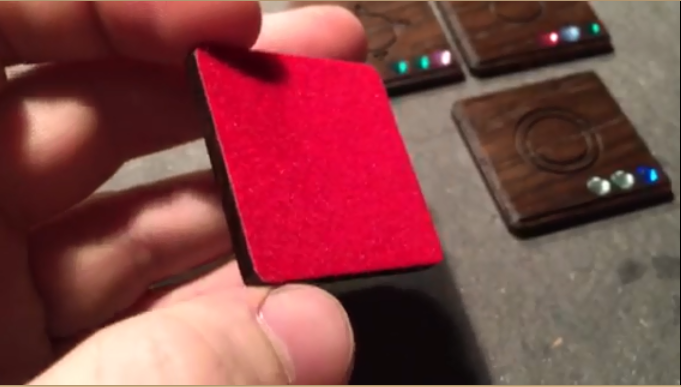This is my question to fellow designers:
How do I RANDOMIZE "Game Tiles"? On one side I have a symbol etched into the wood with "Mana Crystals" around the tile (NSEW) with varying amounts, and on the backside I have red felt, so that the tiles don't damage any playing surface.
If I used a bag and only had 20 tiles, perhaps if players GENTLY mix the bag they could select a "Game Tile" from the bag/pouch ... but I am worried that this might DAMAGE the "Game Tiles" because of collisions inside the bag.
Anyone have OTHER ideas?
Right now the idea is that each player has 20 "Game Tiles":
- 1 Encounter Tile
- 4 Wildcard Tiles (all blank no crystals)
- 15 Game Tiles (with crystals)
A total of 20 Game Tiles per Wizard and therefore 100 Game Tiles in total (20 x 5 Wizards).
But RANDOMIZATION is the main problem. If I flip them all around on the play surface, I could:
- make scratches in the play surface
- could damage the crystals on the game tiles.
Please let me know if you have any more CREATIVE randomization ideas.
Thank you!









